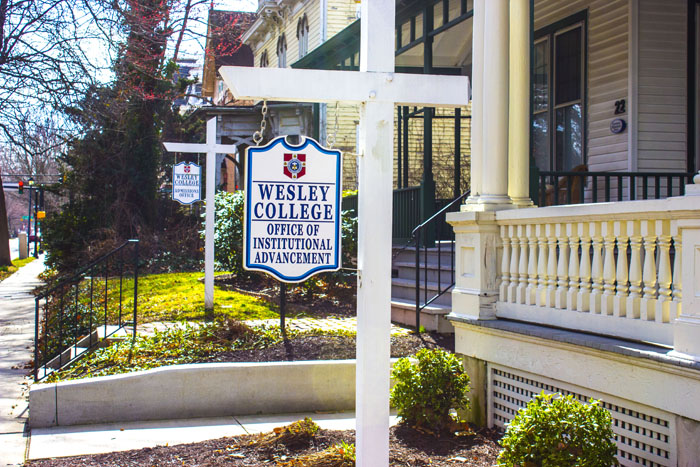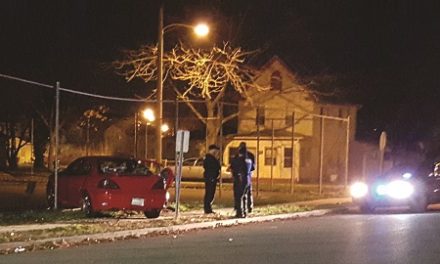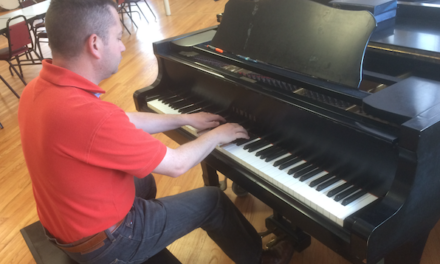By Kristen Griffith, The Whetstone
Wesley College’s endowment has been at about $6 million for at least 10 years.
Thiel College, in northwestern Pennsylvania and one of Wesley’s peer institutions, raised its endowment from $19 million to $68 million last year.
“Thiel has a larger endowment than we do, they got very lucky,†Bill Pritchard, Wesley’s new vice president of institutional advancement said. “We could get as easily lucky. We have a couple of donors who could triple our endowment with one gift.â€
Thiel, located in Greenville, Pa., held a seven-year fundraising campaign and collected $61 million. 8,500 donors contributed, which Pritchard said he almost can’t believe.
“That sounds kind of high for a school of this size,†he said.
Roberta Leonard, Thiel’s vice president for college advancement, said they have 12,000 living alumni.
“Not everyone one of those donors were an alum, but we had a little bit more than 50 percent of our alumni base participate in the campaign,†she said.
About 900 students attend Thiel and about 1,400 students attend Wesley. Wesley has about 1,500 donors.
“Not significantly low considering the size of our school and how many people graduate every year,†he said. “We’re probably a little below average.â€
Senior Courtney Gross said Wesley’s low endowment and lack of fundraising might have to do with its location.
“Wesley to Thiel is like a small town to a big city or the Dover Mall to Christiana Mall,†she said. “Pennsylvania is a much larger state that has so many more options for higher education, partnerships, and donors than Delaware, and I think that is a major reason why Wesley doesn’t raise as much as Thiel.â€
Greenville, Pa., is only 2 square miles and holds about 6,500 people.
In contrast, Dover is about 23 square miles and holds more than 36,000 people.
Gross said Wesley and Dover do not have much to offer that would influence alumni to come back or give back.
“Somewhere along the way, we lost the feeling of community and belonging at Wesley, and that needs to change,†she said.
Wesley’s last campaign began in 2011 and ended in 2016. They raised $13.5 million. This money was not put into the endowment, but used for “current needs.â€
Pritchard said they received money from people with close ties to Wesley like members of the board of trustees, faculty and staff. He said President Clark wanted to start another campaign at the end of the year with the goal of doubling the endowment by 2020.
“It’s a challenge, though, when we have so many current needs,†Pritchard said. “There are dollars that we really do need to spend today.â€
Cathy Nosel, director of advancement, also said they’re focusing on the school’s current needs.
“We understand the endowment is very important and it’s not to say we’re ignoring it,†she said. “A lot of the donors are feeling that they would rather help the students now.â€
Sports Information Director Cyrill Parham, who attended Thiel, said despite the results, Wesley and Thiel give the same amount of effort in fundraising.
“I think both schools do a great job fundraising and targeting alumni and friends that are willing to support higher education, especially at smaller, liberal arts institutions,†he said.
Parham said Thiel’s strong alumni and donor base is a result of how long the school has been around. It was founded in 1866, only seven years before Wesley.
Pritchard said Wesley’s lack of donors might be because Wesley had been a two-year institution until 1978.
“Of the older alumni who are living, they graduated when it was a two-year school,†he said. “Nearly all of them went on to another school to get their four-year degree. And for many of them, their allegiance is to the school where they earned their Bachelor’s degree.â€
He mentioned that alumni usually wait until their 40s, 50s and 60s before they start donating to their alma mater.
“Luckily for us, there are people who came through when it was a two-year school,†Pritchard said.
He said another factor that influenced Wesley’s fundraising problem is that they didn’t have a strong development office and fundraising program until about 10 years ago.
“I’m going to guess that Thiel’s fundraising office is probably a lot older than ours,†he said. “All those things play a role in how much the school raises.â€
Pritchard said Thiel’s success was lucky.
“It was luck with a lot of preparation,†Thiel’s Leonard said. “We did a lot of prep work prior to the campaign with our alumni.â€
She said the school’s consultant thought they were only capable of raising $50 million
“We weren’t going to go for the figure we knew we could get,†she said. “We were going to stretch and go for what we wanted to achieve.â€
She said raising $68 million was a testament to their alumni base.
“We also had a pretty strong structure and plan to push forward projects that we knew would push the institution forward,†she said.
Gross said improving Wesley’s community could influence more alumni to give back.
“If we improve campus and improve the community, we will improve fundraising,†she said. “We might even be able to improve the areas around Wesley and Dover to attract even more donors. You need money to raise more money.â€





